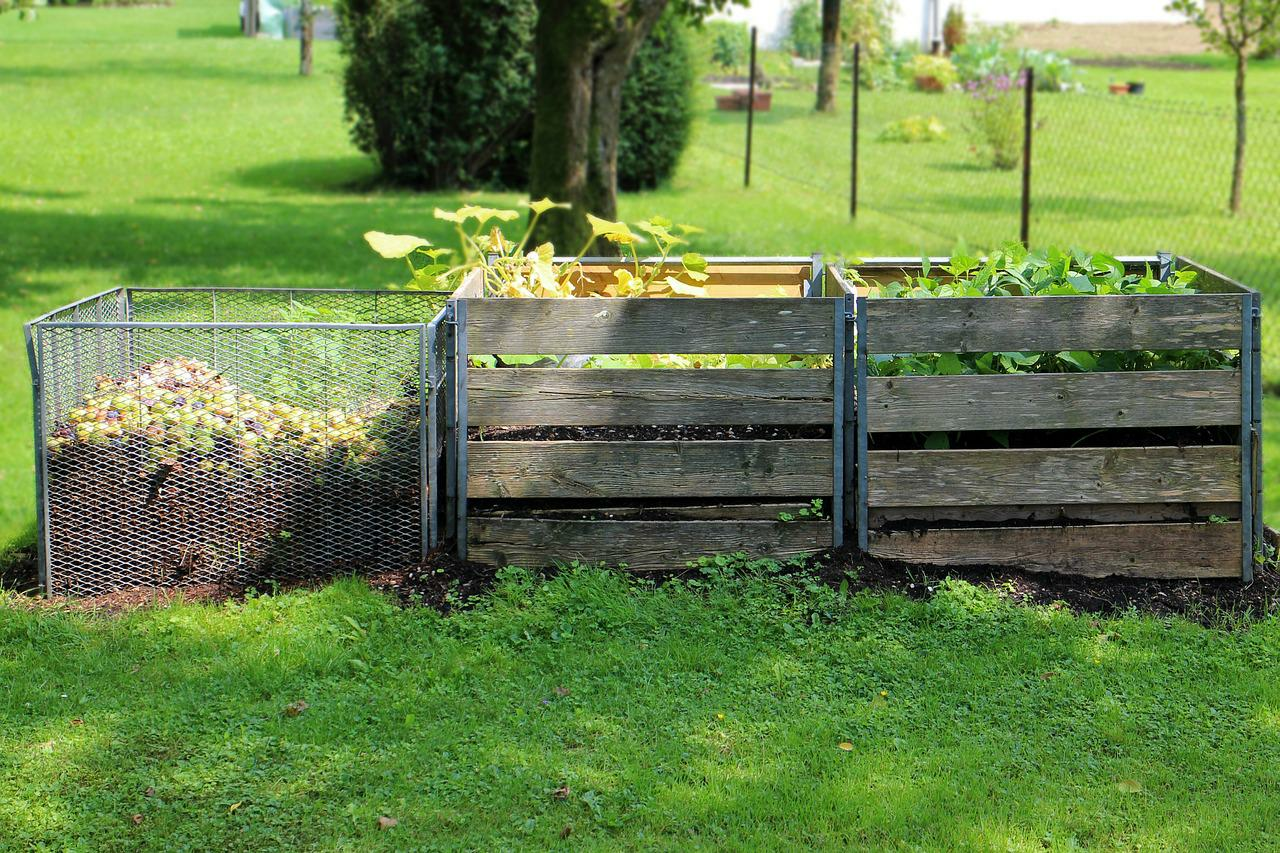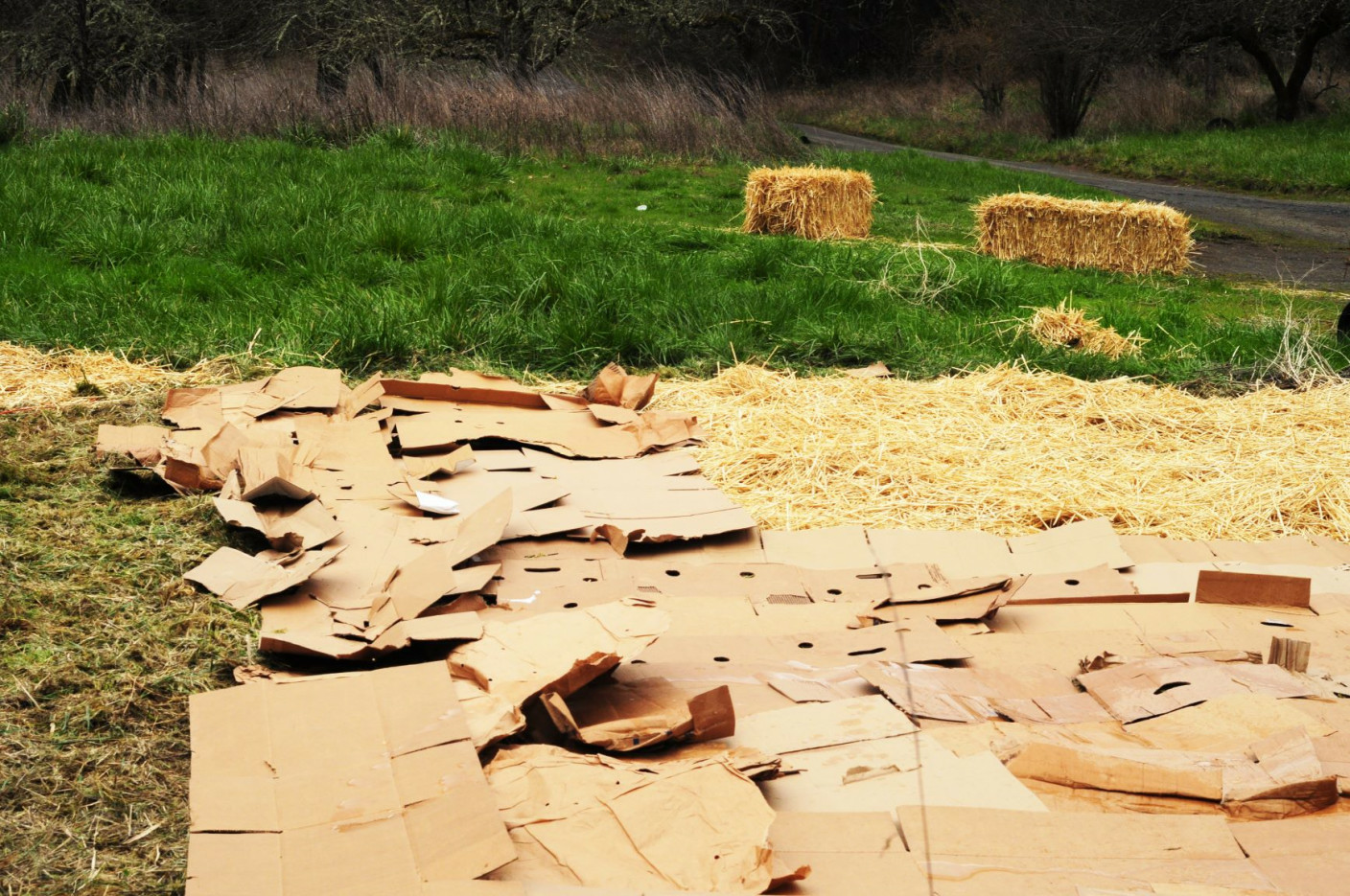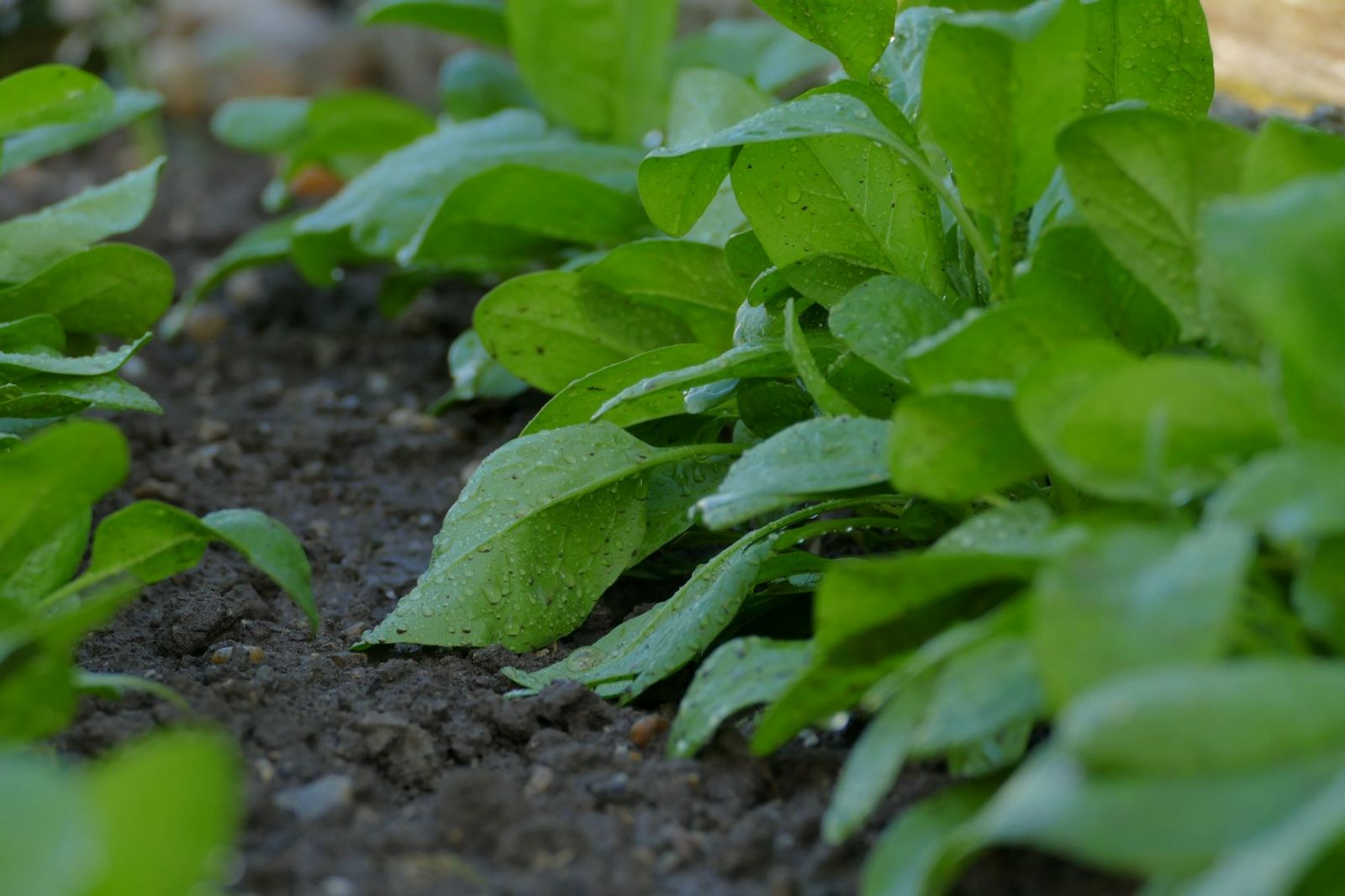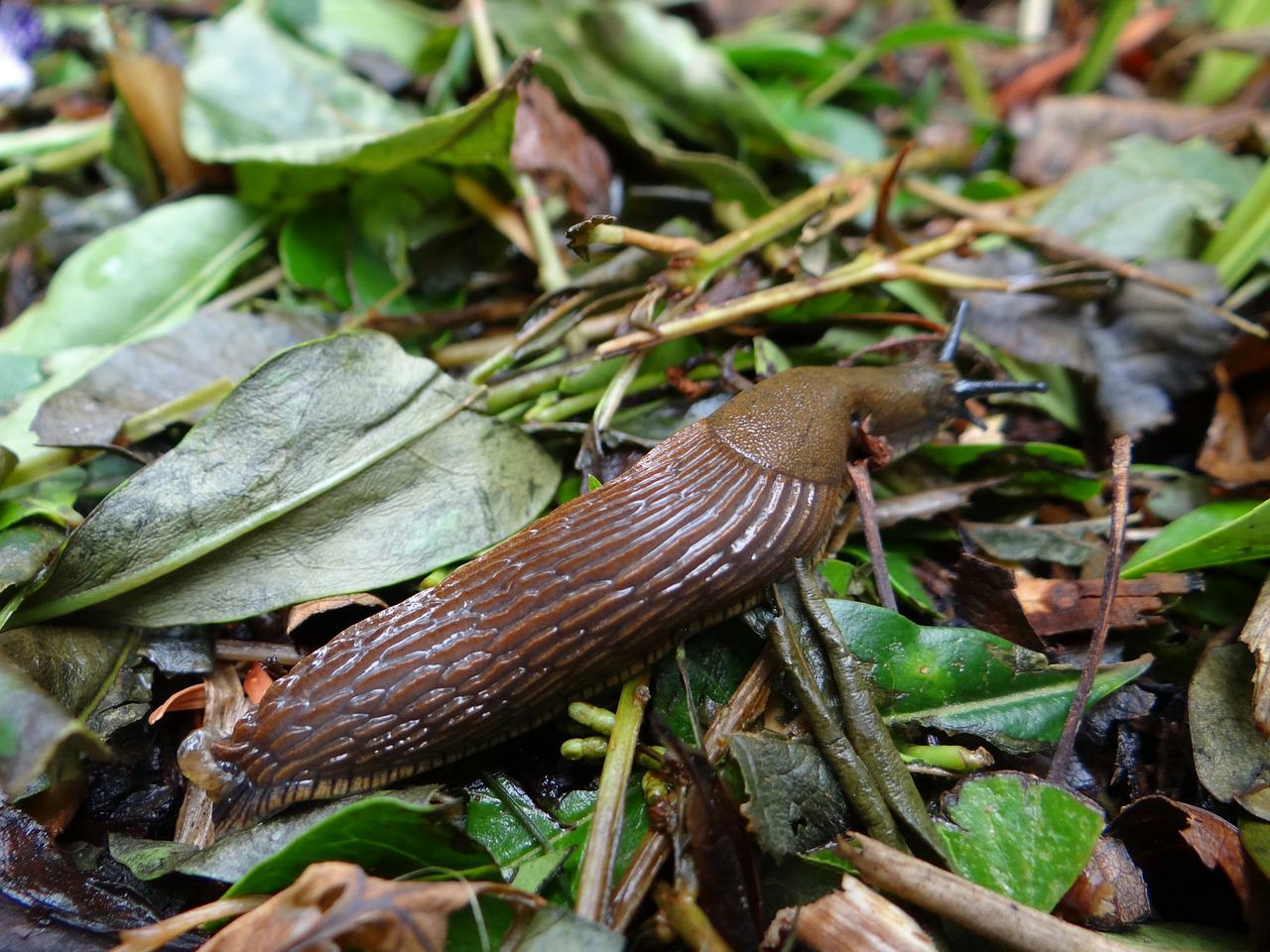Sheet mulching instead of digging
Gardening without digging
Fertile soil is the basis for every gardener. This requires an active soil life that converts organic material and thus maintains the soil function. It works like compost. With sheet mulching, you use this knowledge, whereby the conversion takes place directly on the bed.
What is sheet mulching?

Sheet mulching involves layering different organic materials, which triggers composting. When layering, you alternate between nitrogen-rich (green layer) and carbon-rich (brown layer) material. With a little patience, the result is a wonderfully revitalized bed with fertile soil.
Material

- Brown layer: straw, wood shavings, reeds, leaves, pine needles, leaves and other small chopped wood and branches, unprinted cardboard
- Green layer: manure, grass and vegetable cuttings, coffee grounds, compost, vegetables, fruit, tea leaves and bags, wild herbs
- To further improve the soil and stimulate soil life, you can also work in a little primary rock flour
Instructions

- Determine the area: mow, level and water; optional: apply compost
- Apply an insulating layer of cardboard or compost and wait a week
- Pile up organic material: alternate brown and green material
- Mulch
Planting

Due to the high biological activity, a lot of nitrate is released into the soil. During rotting, you should avoid nitrate-enriching crops such as spinach, radishes and lettuce. For this reason, it's better to start with heavy-digesting plants such as pumpkins, tomatoes or cabbage. In addition, a no-dig bed is not very deep to begin with (unless you build up a good layer), so it is not suitable for particularly deep-rooted plants or root vegetables.
Here's what you need to know:

- Despite the layers, there must not be any oxygen-deficient conditions; make sure there is a sufficient supply of oxygen
- Moisture is very important for decomposition, so you should water regularly
- Weed out unwanted weeds
- Keep an eye on "pests" such as snails and termites, which are attracted by sheet mulching

